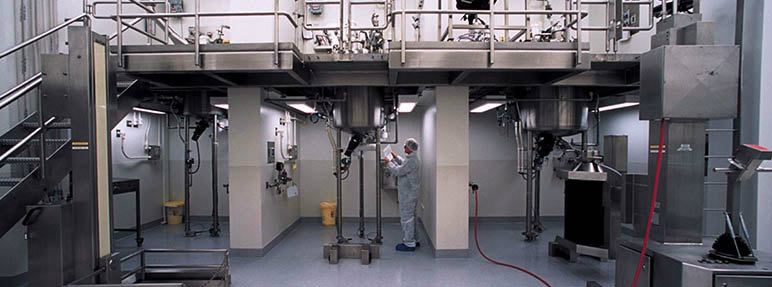Merck & Co. disclosed today it will restructure its manufacturing and supply network over the next four years, in a cost-cutting move designed to save the pharma giant up to $1.2 billion.
In a regulatory filing, Merck said it will further optimize its manufacturing and supply network, as well as reduce its global real estate footprint, through a restructuring program that will result in charges against earnings.
Merck did not offer details of the restructuring, such as which facilities would be closed and which operations would remain.
“The actions contemplated under the 2019 restructuring program are expected to be substantially completed by the end of 2023, with the cumulative pretax costs to be incurred by the company to implement the 2019 restructuring program estimated to be approximately $800 million to $1.2 billion,” Merck stated.
Merck estimated that approximately 55% of its cumulative pretax costs will consist of cash to pay for facility shutdowns and “employee separation expense”—though the company did not disclose how many jobs it intends to cut.
The remaining approximately 45% of Merck’s cumulative pretax costs will be non-cash, and relate primarily to accelerated depreciation of facilities to be closed or divested, the company added.
Merck said it expected to record GAAP (Generally Accepted Accounting Principles) charges of approximately $500 million related to the 2019 Restructuring Program in 2019, of which $187 million will be incurred in the first quarter. The restricting will not affect Merck’s non-GAAP financial results.
Investment plans, restructurings
Merck’s 2019 restructuring comes just six months after the company announced plans to increase a long-range capital investment announced in February 2018. In October, Merck raised its projected spending on new capital projects through 2022 from an initial $12 billion—of which $8 billion was committed to projects in the U.S.—to $16 billion, adding: “The focus of this investment will primarily be on increasing manufacturing capacity across Merck’s key businesses.”
Merck has carried out convulsive restructuring programs in recent years—including an R&D restructuring announced in 2013 that was intended to shed 8,500 jobs worldwide.
According to Form 10-K annual reports, Merck’s workforce as of December 31, 2018, stood at approximately 69,000 employees worldwide—the same number as at the end of 2017—although the company’s U.S. workforce, which includes Puerto Rico, shrunk to 25,400 last year from approximately 26,700 during 2017.
By contrast, at the end of 2009—the year Merck completed a $41 billion acquisition of Schering-Plough—the newly-combined company had 100,000 employees, with approximately 42,000 employed in the U.S., including Puerto Rico.
Merck’s 2019 restructuring was announced along with first-quarter results that beat analyst expectations. Merck finished Q1 with GAAP net income of $2.915 billion, compared with $741 million in the first three months of 2018, a number skewed by a $1.4 billion charge related to its formation of an up-to-$5.76 billion cancer partnership with Eisai. Merck’s first-quarter sales rose 8% year-over-year to $10.816 billion.
During Q1, Merck enjoyed a 55% leap in sales of its marketed cancer immunotherapy Keytruda® (pembrolizumab), to $2.269 billion from $1.464 billion in the first quarter of 2018.
Merck also reported a 58% year-over-year quarterly sales jump in China, which at $725 million was up 58% driven by sales of vaccines and oncology treatments. The sales increase would have been 67% but for foreign exchange rates, the company added.
“Our strong start to 2019, with double-digit sales and EPS growth in the first quarter, demonstrates our execution across all aspects of our business and the strength of our key growth pillars, including oncology and vaccines,” Merck chairman and CEO Kenneth C. Frazier said in a statement. “Our investments in research and development are paying off, and we are confident in our science-driven strategy, growth prospects, and ability to sustainably deliver value to patients and shareholders.”



